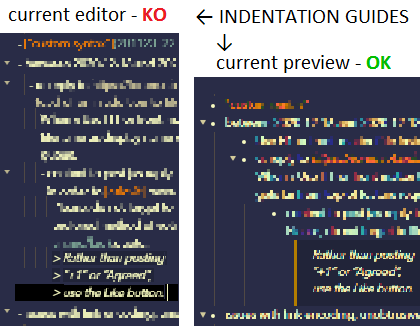To be considered: As mentioned in original post, wrapped/multiline item interrupts indentation guides.
As a side effect, this allows to distinguish multiline item from list of separate lines.
How to effectively visually distinguish these when not breaking vertical lines?
In editor, all vertical lines are broken which is bad. But in preview, only the deepest indentation guide is interrupted, which I is good solution IMHO.

The CSS used for screenshot is from here.